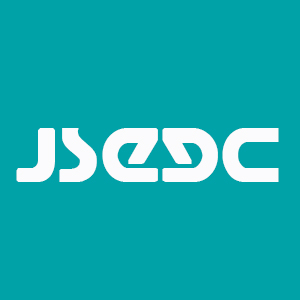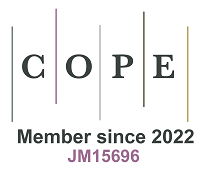REFERENCES
1. Finckenauer JO. Problems of definition: What is organized crime? Trends in Organized Crime 2005;8:63-83.
2. Thrasher FM. The gang: A study of 1,313 gangs in Chicago. University of Chicago Press; 2013.
3. Adler PA. Wheeling and dealing: An ethnography of an upper-level drug dealing and smuggling community. Columbia University Press; 1993.
4. Reuter P. Disorganized crime: The economics of the visible hand. MA: MIT press Cambridge; 1983.
5. Morselli C. .
6. Gambetta D. The Sicilian Mafia: The Business of Private Protection. Cambridge: Harvard University Press; 1996.
7. Paoli L. Mafia brotherhoods: Organized crime, Italian style. Oxford Scholarship Online: Oxford University Press; 2008.
8. Campana P. Explaining criminal networks: Strategies and potential pitfalls. Methodological Innovations 2016;9:205979911562274.
9. Kleemans ER, de Poot CJ. Criminal Careers in Organized Crime and Social Opportunity Structure. European Journal of Criminology 2008;5:69-98.
10. Hulst R. Introduction to Social Network Analysis (SNA) as an investigative tool. Trends in Organized Crime 2008;12:101-21.
11. Calderoni F, Catanese S, De Meo P, Ficara A, Fiumara G. Robust link prediction in criminal networks: A case study of the Sicilian Mafia. Expert Systems with Applications 2020;161:113666.
12. Johnsen JW, Franke K. Identifying Central Individuals in Organised Criminal Groups and Underground Marketplaces. In: Shi Y, Fu H, Tian Y, Krzhizhanovskaya VV, Lees MH, editors. Computational Science – ICCS 2018. Cham: Springer International Publishing; 2018. pp. 379-86.
13. Duijn PAC, Kashirin V, Sloot PMA. The Relative Ineffectiveness of Criminal Network Disruption. Scientific Reports 2014;4:4238.
14. Cavallaro L, Ficara A, De Meo P, Fiumara G, Catanese S, et al. Disrupting resilient criminal networks through data analysis: The case of Sicilian Mafia. PLOS ONE 2020;15:e0236476.
15. Rostami A, Mondani H. The Complexity of Crime Network Data: A Case Study of Its Consequences for Crime Control and the Study of Networks. PLOS ONE 2015;10:1-20.
16. Robinson D, Scogings C. The detection of criminal groups in real-world fused data: using the graph-mining algorithm "GraphExtract". Security Informatics 2018;7:2.
17. Villani S, Mosca M, Castiello M. A virtuous combination of structural and skill analysis to defeat organized crime. SocioEconomic Planning Sciences 2019;65:51-65.
18. Ficara A, Cavallaro L, De Meo P, Fiumara G, Catanese S., et al. Social Network Analysis of Sicilian Mafia Interconnections. Complex Networks and Their Applications, VIII. Springer International Publishing; 2020. pp. 440-50.
19. Ferrara E, De Meo P, Catanese S, Fiumara G. Detecting criminal organizations in mobile phone networks. Expert Systems with Applica tions 2014;41:5733-50.
20. Agreste S, Catanese S, De Meo P, Ferrara E, Fiumara G. Network structure and resilience of Mafia syndicates. Information Sciences 2016;351:30-47.
21. Rothenberg R. From whole cloth: Making up the terrorist network. Connections 2002;24:36-42.
22. Berlusconi G, Calderoni F, Parolini N, Verani M, Piccardi C. Link Prediction in Criminal Networks: A Tool for Criminal Intelligence Analysis. PLOS ONE 2016;11:1-21.
23. De Moor S, Vandeviver C, Vander Beken T. Assessing the missing data problem in criminal network analysis using forensic DNA data. Social Networks 2020;61:99-106.
24. Squartini T, Mastrandrea R, Garlaschelli D. Unbiased sampling of network ensembles. New Journal of Physics 2015;17:023052.
25. Peixoto TP. Reconstructing Networks with Unknown and Heterogeneous Errors. Phys Rev X 2018;8:041011.
26. Newman MEJ. Estimating network structure from unreliable measurements. Phys Rev E 2018;98:062321.
27. Tantardini M, Ieva F, Tajoli L, Piccardi C. Comparing methods for comparing networks. Scientific Reports 2019;9:17557.
28. Wilson RC, Zhu P. A study of graph spectra for comparing graphs and trees. Pattern Recognition 2008;41:2833-41.
29. Soundarajan S, Eliassi-Rad T, Gallagher B. .
30. Emmert-Streib F, Dehmer M, Shi Y. Fifty years of graph matching, network alignment and network comparison. Information Sciences 2016;346-347:180-97.
31. Donnat C, Holmes S. Tracking network dynamics: A survey using graph distances. The Annals of Applied Statistics 2018;12:971-1012.
32. Hartle H, Klein B, McCabe S, et al. Network comparison and the within-ensemble graph distance. Proceedings of the Royal Society A: Mathematical, Physical and Engineering Sciences 2020 11 ;476:20190744.
33. Wills P, Meyer FG. Metrics for graph comparison: A practitioner's guide. PLOS ONE 2020;15:e0228728.
34. Akoglu L, Tong H, Koutra D. Graph based anomaly detection and description: a survey. Data Mining and Knowledge Discovery 2015;29:626-88.
37. Cavallaro L, Ficara A, De Meo P, et al. Criminal Network: The Sicilian Mafia. "Montagna Operation". Zenodo 2020; doi: 10.5281/zenodo.3938818.
38. Koutra D, Vogelstein JT, Faloutsos C. DELTACON: A Principled Massive-Graph Similarity Function.. , ;.
39. Ficara A, Fiumara G, De Meo P, Liotta A. Correlations Among Game of Thieves and Other Centrality Measures in Complex Networks. In: Fortino G, Liotta A, Gravina R, Longheu A, editors. Data Science and Internet of Things: Research and Applications at the Intersection of DS and IoT. Cham: Springer International Publishing; 2021. pp. 43-62.
40. Erdös P, Rényi A. On Random Graphs I. Publicationes Mathematicae 1959;6:290-97.
42. Albert R, Barabási AL. Topology of Evolving Networks: Local Events and Universality. Phys Rev Lett 2000;85:5234-37.
43. Malm A, Bichler G. Networks of Collaborating Criminals: Assessing the Structural Vulnerability of Drug Markets. Journal of Research in Crime and Delinquency 2011;48:271-97.
45. Faust K, Tita GE. Social Networks and Crime: Pitfalls and Promises for Advancing the Field. Annual Review of Criminology 2019;2:99-122.
46. Jupp VR. Methods of Criminological Research. Taylor & Francis; 2012.
47. Grund TU, Densley JA. Ethnic Homophily and Triad Closure: Mapping Internal Gang Structure Using Exponential Random Graph Models. Journal of Contemporary Criminal Justice 2015;31:354-70.
48. Natarajan M. Understanding the Structure of a Large Heroin Distribution Network: A Quantitative Analysis of Qualitative Data. Journal of Quantitative Criminology 2006;22:171-92.
49. Williams P. Transnational criminal networks. Networks and netwars: the future of terror, crime, and militancy 2001;1382:61.
50. Hagberg AA, Schult DA, Swart PJ. Exploring Network Structure, Dynamics, and Function using NetworkX.. , ;.
51. Ficara A, Fiumara G, De Meo P, Catanese S. Multilayer Network Analysis: The Identification of Key Actors in a Sicilian Mafia Operation. In: Perakovic D, Knapcikova L, editors. Future Access Enablers for Ubiquitous and Intelligent Infrastructures. Cham: Springer International Publishing; 2021. pp. 120-34.






